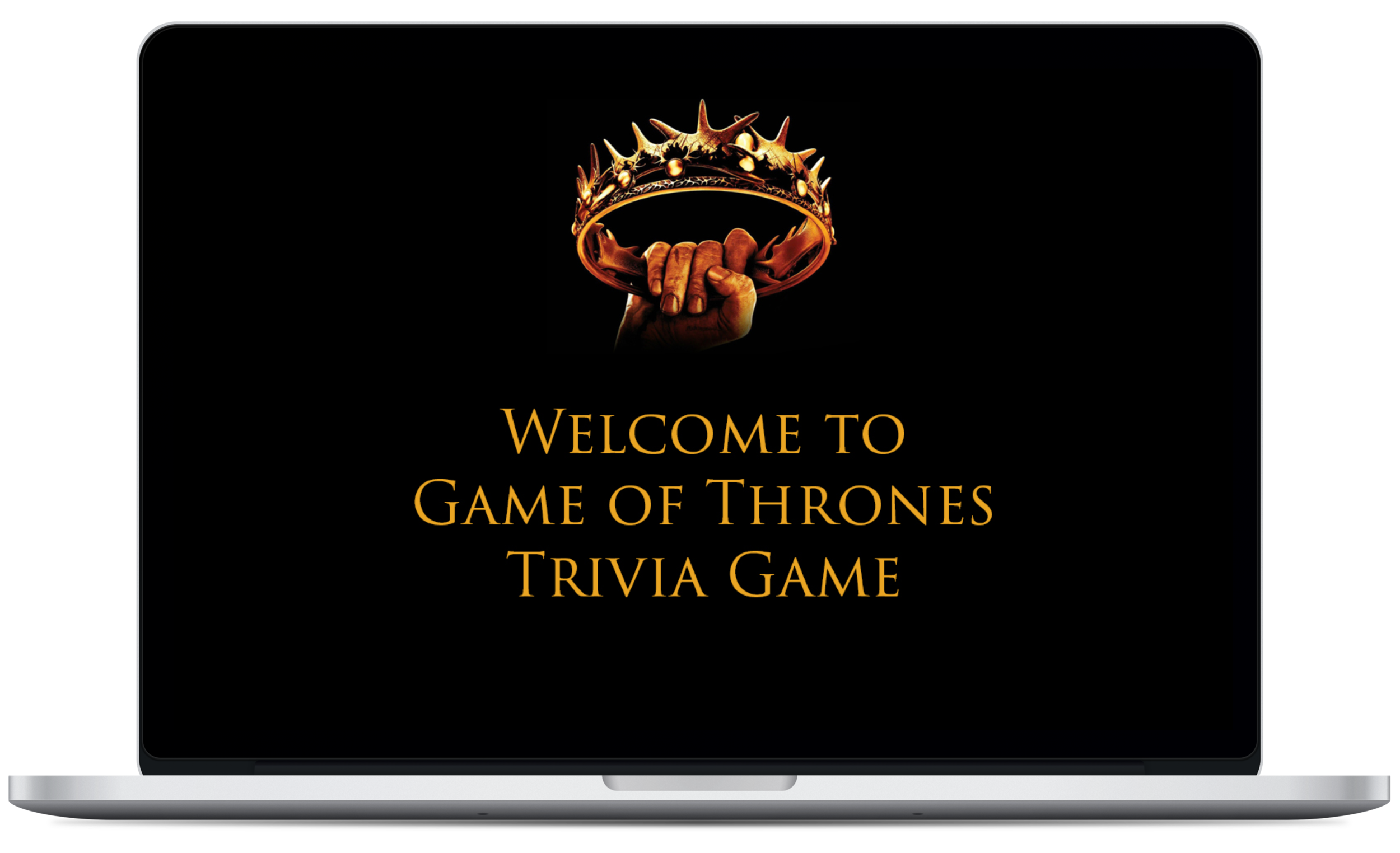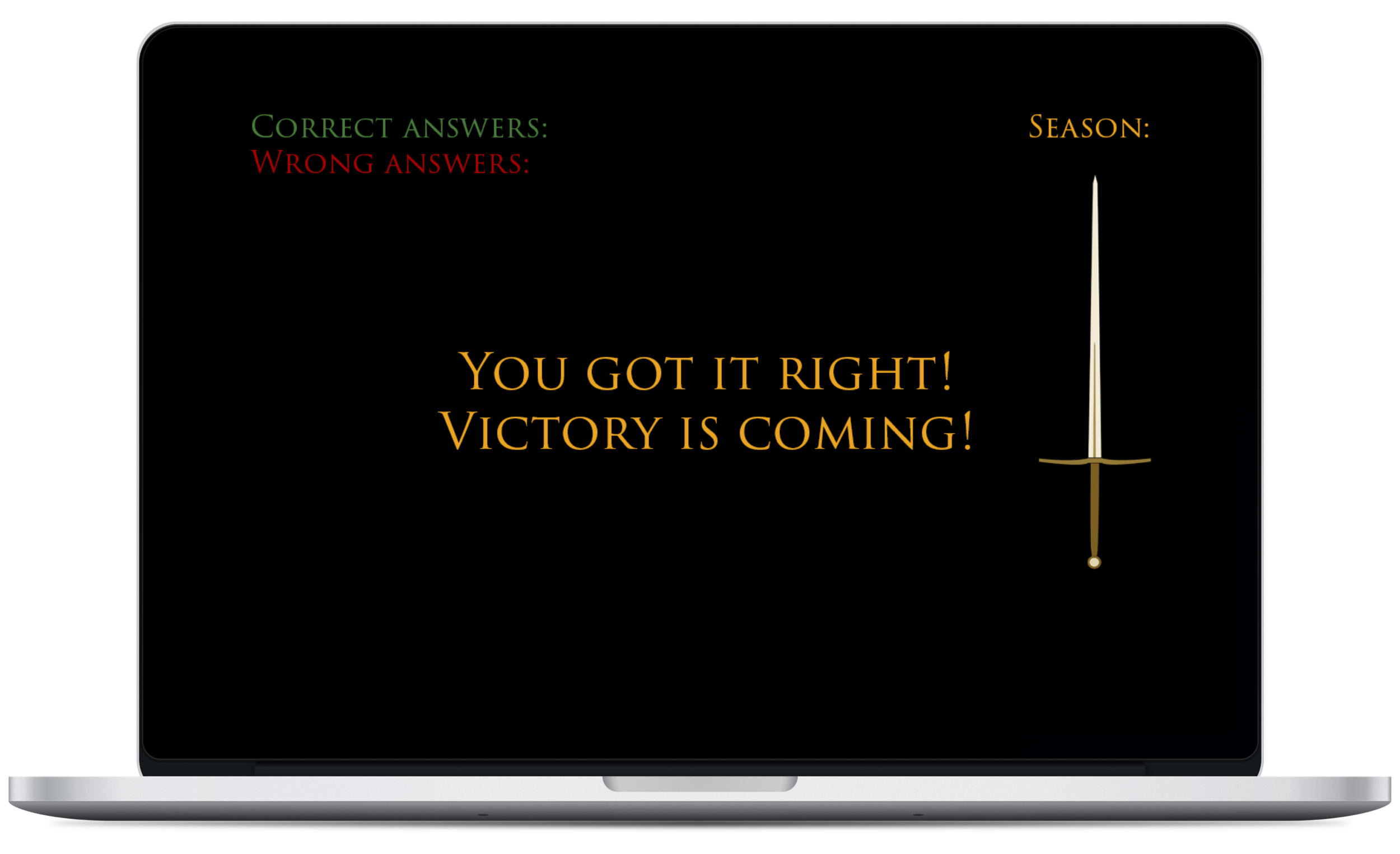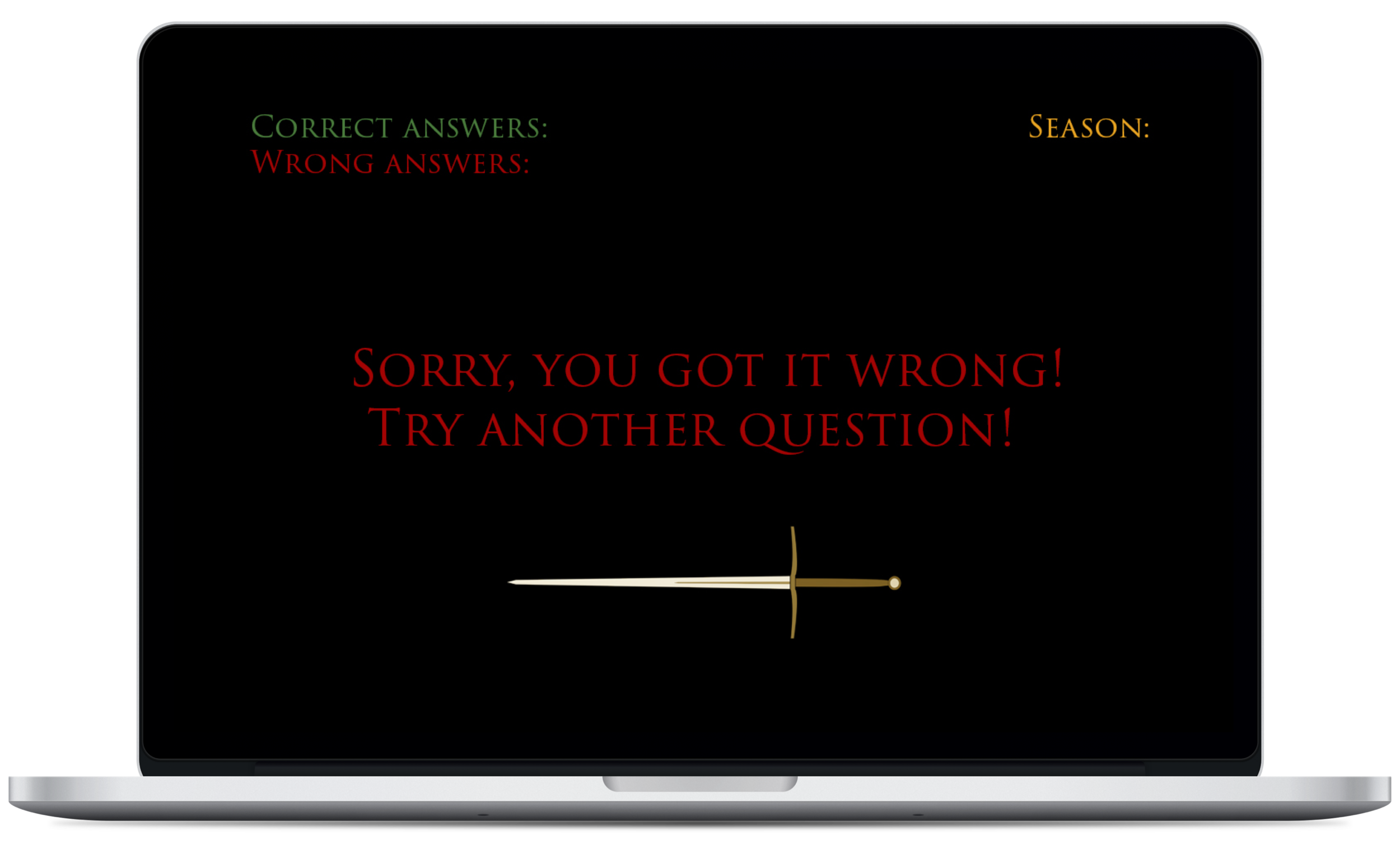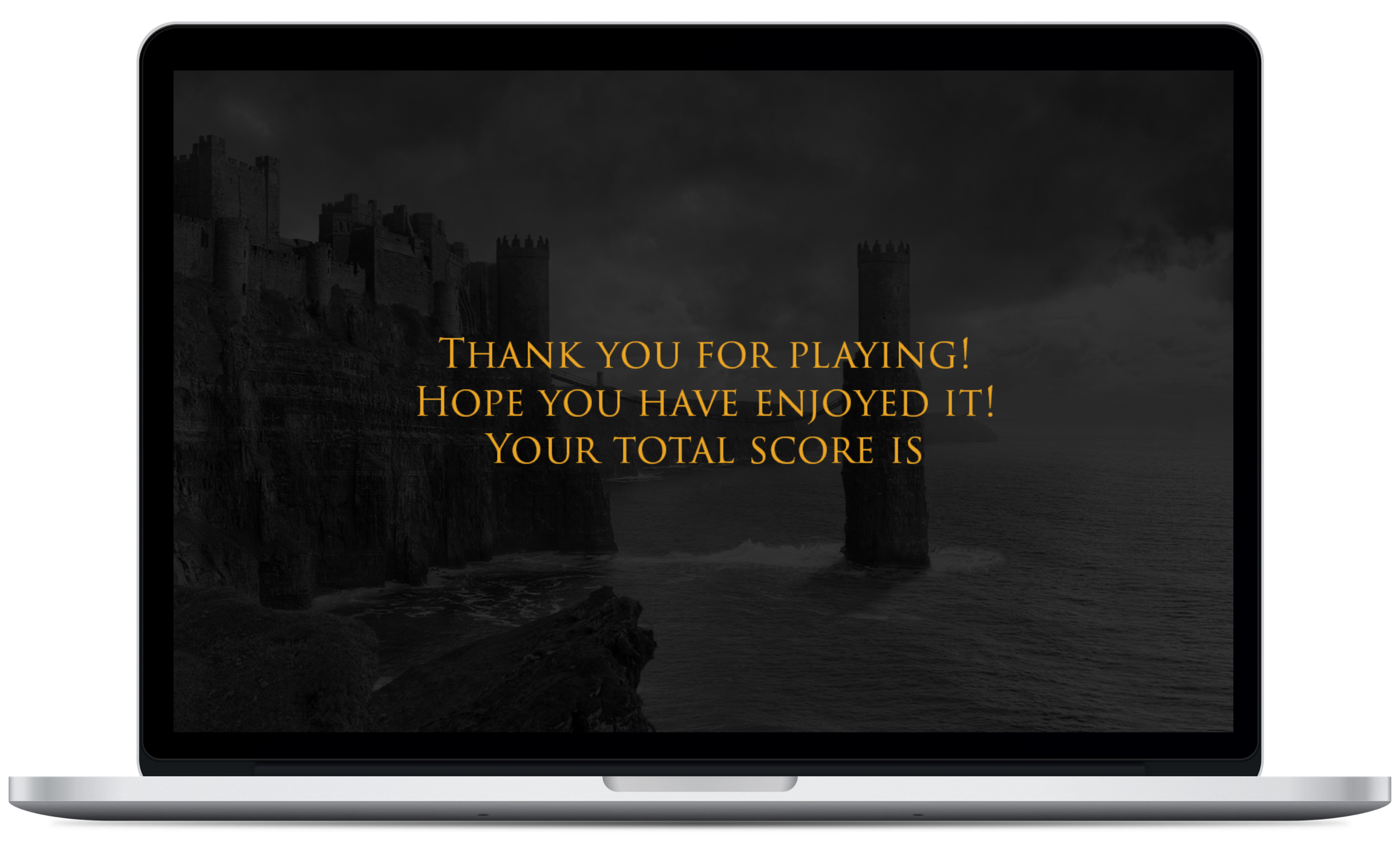Game of Thrones Trivia Game
Project Description
The series Game of Thrones premiered on HBO on April 2011, but I didn’t hear about it till Summer 2012. A friend of mine mentioned it and we started to watch together. We finished the first season in one day and I haven't skipped an episode since… I wouldn’t call myself a fan, but I greatly appreciate the imagination of the series' creators and the immersion that one experiences while watching.
As part of the Interactive Product Design course at Georgia Tech, we were assigned to “… design a simple game or toy that uses RFID tags to prompt actions that happen with on-screen elements and electronic components using the capabilities of the Arduino …”.
Since both Karan and I were fascinated by Game of Thrones, the choice to build an interactive trivia table game, inspired by the series, wasn’t hard. The idea was to allows the show's fans to extend their TV experience by showing off their knowledge of the plot and the characters.
Karan was mostly focused on the SW and HW aspects, while I led the interaction, the user experience, and the graphic design of the project.
Process
Defining System Components
RFID cards - the RFID cards were used to insert user’s input into the system. Each card was coded to represent a major house of Westeros, and was decorated accordingly. Using the cards, users are expected to answer the questions which are presented to them on a computer screen.
Game box - a wooden laser-cut box containing an Arduino kit and its associated hardware. The Arduino was needed to read the input from the game cards, and deliver it to the processing machine.
Computer - a computer was used to generate the trivia questions, as well as to decode users' input into the system.
Designing Game Screens
I designed three different types of screens:
Introduction, explanation and summary screens - screens used to present the game rules and to show results to the users
Question screens - screens used to present the questions to the users, testing their knowledge base
Feedback screens - screens used to provide feedback on the users’ answers
Some of the above screens are static, but others have dynamic components. For example, we provide users with dynamic feedback about the number of correct and incorrect answers they have.






Defining Game Interactions
The game allows insertion of tactile inputs into the system and receiving visual and audio feedback in response:
Final Result
What did I learn?
Apply the synergetic approach!
The above project was a success: it was recognized to be the best class project in its category and was exhibited at the end of the semester to faculty and students. Other projects that we did with Karan, in the same course, were less successful. We analyzed the outcomes of our collaboration and derived that our synergetic approach was the reason for our success. According to Wikipedia, “… human synergy usually arises when two persons with different complementary skills cooperate …”, and only in this project did we effectively define a clear separation of our roles. This was a long-lasting lesson for me and greatly helped me later on in the industry.
Note
The design of the game was inspired by the Game of Thrones TV show. The images, the terminology, and the music were based on this series and we do not claim that these are original.




